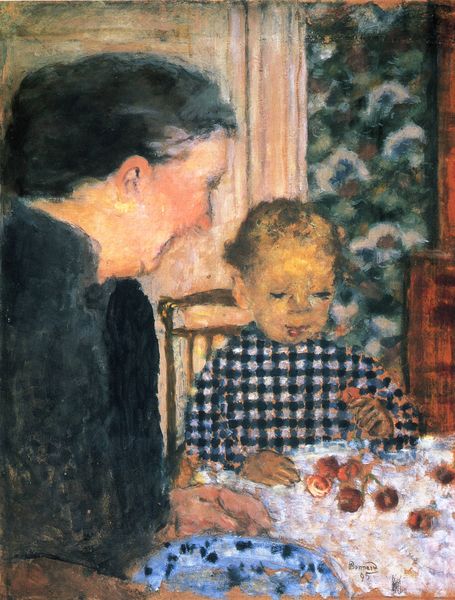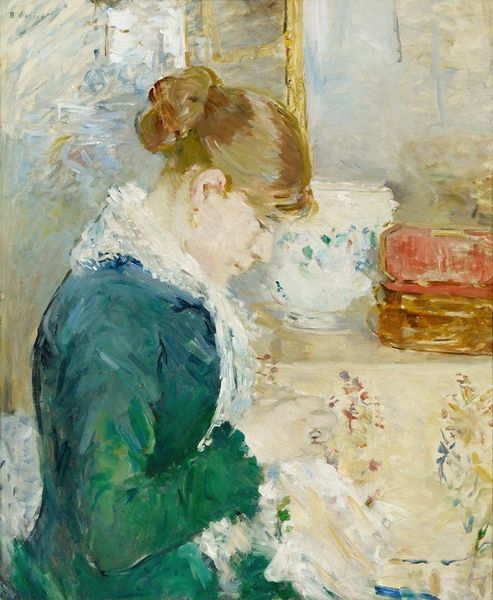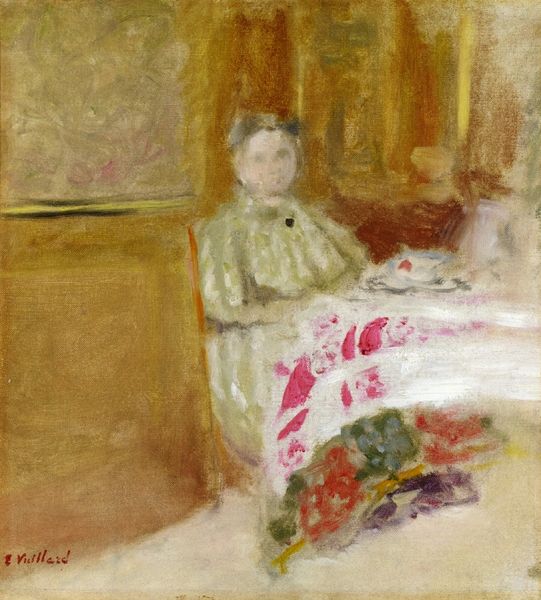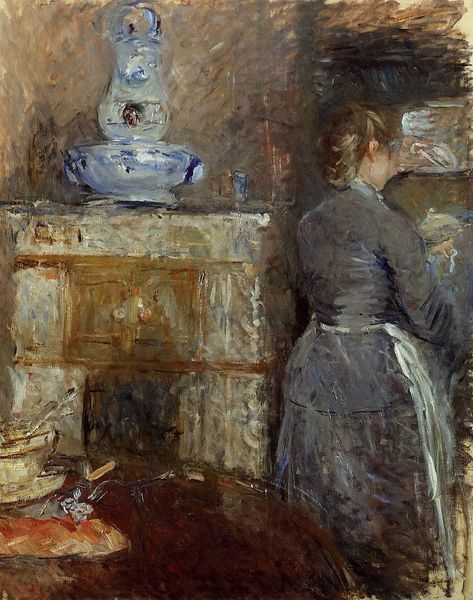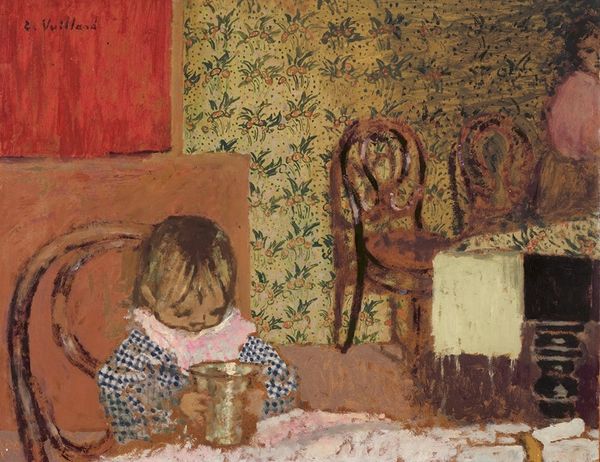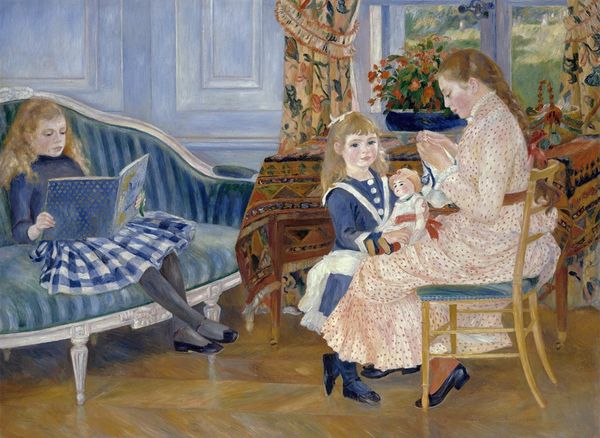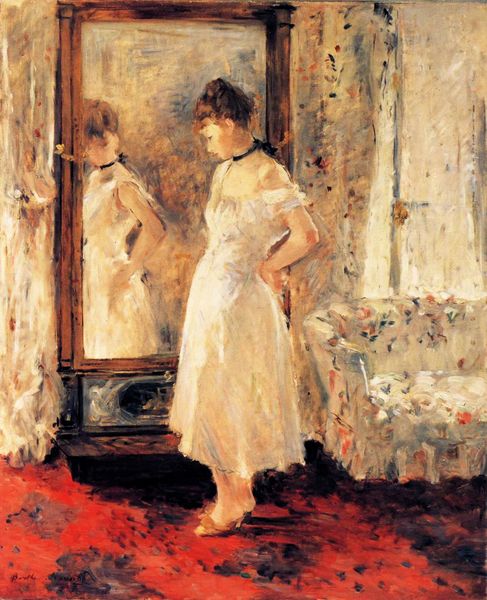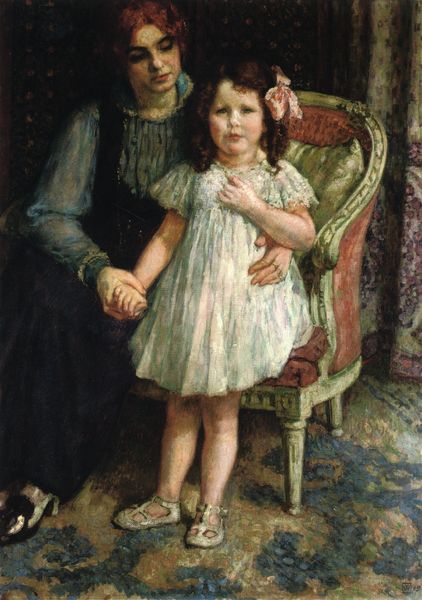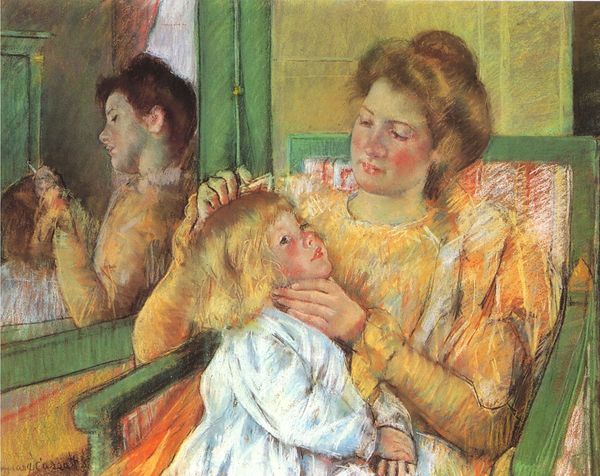
painting, oil-paint, impasto
#
portrait
#
gouache
#
painting
#
oil-paint
#
oil painting
#
impasto
#
intimism
#
group-portraits
#
genre-painting
#
post-impressionism
Dimensions: 51.4 x 50.2 cm
Copyright: Public domain
Curator: This painting, rendered in oil, gouache, and impasto, is entitled “Mother and Child,” dating to around 1900. It’s a work by Édouard Vuillard. Editor: Immediately, I notice how the pattern of the wallpaper almost seems to envelop the figures, a striking backdrop for such a common scene. Curator: Vuillard, associated with the Post-Impressionist movement and the Intimist style, often portrayed domestic interiors like this one. I am particularly struck by the relationship implied by the mirroring of the floral wallpaper and the floral lace around the child’s neck. What statement does this visual rhyme create about nurture and identity, do you think? Editor: Well, beyond pure aesthetics, portraying such private scenes elevated the domestic sphere in the arts. By painting genre scenes, and portraiture like this piece, Vuillard highlighted the bourgeois family and woman's role within this family unit as crucial pillars of French society. But there is such a pervasive interiority to Vuillard's world... Is it commentary or simple celebration? Curator: Perhaps it’s both. Observe how the woman, probably the mother, clad in somber tones, almost blends with the room, suggesting the all-encompassing nature of her role. There is a feeling of gentle enclosure within the walls that are heavily laden with pattern. Editor: Indeed, but how subversive was it really? While portraying these themes, the "Impressionists" like Vuillard catered to an increasingly bourgeois market eager to see itself reflected on the walls of galleries. The art world, after all, always mirrors its patrons, doesn't it? Curator: True, yet by focusing on these intimate, usually overlooked moments, Vuillard gave visibility to the unseen labor and emotional landscape of domestic life. And considering the Symbolist aesthetic currents of the time, isn't it reasonable to read deeper emotional weight in what some would see simply as genre painting? Editor: It is, perhaps, the intimate scale itself, both literal and thematic, that remains so compelling, drawing us into a world where the boundary between background and being blurs. Curator: An effect that, undeniably, reveals aspects of psychological insight as well as societal portrayal of a singular experience within fin-de-siècle France.
Comments
No comments
Be the first to comment and join the conversation on the ultimate creative platform.
